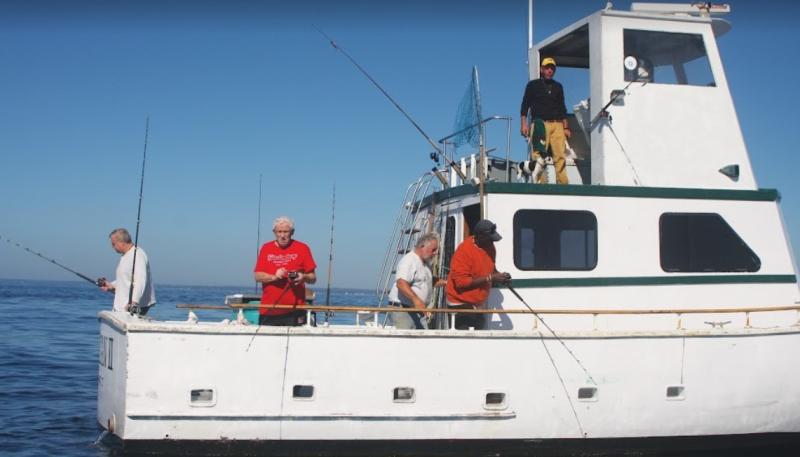Saltwater anglers, for-hire captains, and other members of the recreational fishing community often ask how and why we collect recreational fishing data. They also want to know how we use that data to estimate total recreational catch. Our Ask MRIP web series answers your questions about the science and statistics that support sustainable fishing.
Why are for-hire clients surveyed about their catch instead of their captains?
We collect information from for-hire clients instead of captains to ensure that catch rate data are consistent and comparable across for-hire, shore, and private boat modes. That’s because our estimates of catch rate are based on the number of trips taken by anglers, not boat trips. We do the same with shore and private boat interviews: We interview each individual angler about their individual catch. This consistency is important to ensure high-quality data. If we interviewed some anglers using one method, and other anglers using a different method, we could introduce the potential for systematic differences between surveys. In addition, as opposed to the numerous types of commercial data collection programs, which have multiple components, there are no complementary validation methods related to for-hire electronic vessel trip-reported catch data.
Why are for-hire operators asked to report to more than one program?
For-hire data are a critical component that drives the science and management measures needed to keep recreational fish stocks sustainable. Different NOAA Fisheries data collection programs gather different pieces of information about catch and effort. When combined, they provide a more complete picture of for-hire fishing activity than any existing single program could.
Many states also administer their own data collection programs. While these programs were designed for different purposes, we are working to help streamline the for-hire reporting process. Across NOAA Fisheries, and in collaboration with our partners at the Atlantic Coastal Cooperative Statistics Program, we have been developing tools that will allow the submission of a single electronic vessel trip report for multiple jurisdictions.
How are for-hire fishing data used?
We use several types of data to produce estimates of total for-hire catch. They include catch data collected through shoreside interviews, effort data collected through telephone surveys, and information collected through electronic vessel trip reports. These estimates are combined with information about shore and private boat fishing activity. This allows stock assessment scientists and managers to evaluate the impact of recreational fishing on fish populations and the effectiveness of management measures.
How does NOAA Fisheries use for-hire logbook data?
NOAA Fisheries regional offices and science centers administer three for-hire trip reporting programs. They overlap with the Marine Recreational Information Program’s for-hire data collection. These programs target federal for-hire permit holders, and participation is a condition of the permit.
All federally permitted for-hire vessels with New England or Mid-Atlantic Council permits are required to submit electronic Vessel Trip Reports to the Greater Atlantic Regional Fisheries Office. They are required regardless of the area fished. The data collected are used for several purposes:
- Type of trip, number of anglers on each trip, and soak time (hours fished): Used by MRIP to estimate for-hire fishing effort
- Fish kept, fish discarded, chart area (statistical), and lat/lon (where the fish is caught): Used by managers to assign fish to a stock area
- As noted above, estimates of catch rate are based on the number of trips taken by individual for-hire clients and other anglers, not boat trips, so we use angler interviews to produce catch estimates. In addition, for-hire electronic vessel trip-reported data do not have a validation component.
- Gear types: Used by stock assessment scientists to estimate discard mortality by fishing gear (e.g., hook and line, trawl, pot)
Federally permitted for-hire charter boats with South Atlantic and/or Gulf of Mexico permits, regardless of area fished, must submit electronic trip reports to the Southeast Regional Office. This is part of the Southeast For-Hire Integrated Electronic Reporting Program. Federally permitted headboats in the South Atlantic and Gulf of Mexico must submit trip reports to the Southeast Region Headboat Survey, if selected to participate in that survey.
At this time, the Southeast For-Hire Integrated Electronic Reporting Program is being conducted alongside the For-Hire Survey. Some vessel owners or operators may be asked—or required, depending on the permit(s) they hold—to participate in both for benchmarking purposes. This will be a critical step in the process of fully transitioning to the Southeast For-Hire Integrated Electronic Reporting program.
Have a question?
For more answers to your questions about recreational fishing data, read the first three posts in our Ask MRIP web series. If you have a question you’d like us to answer, email Fisheries.MRIP@noaa.gov.



